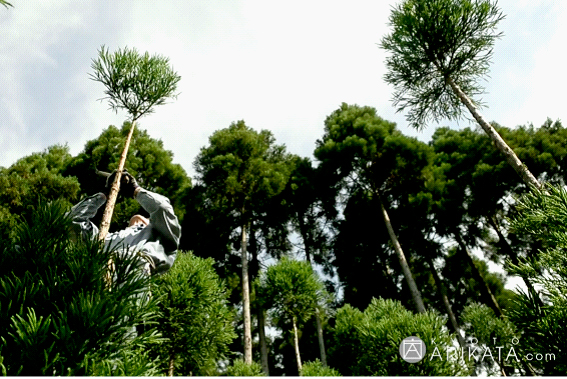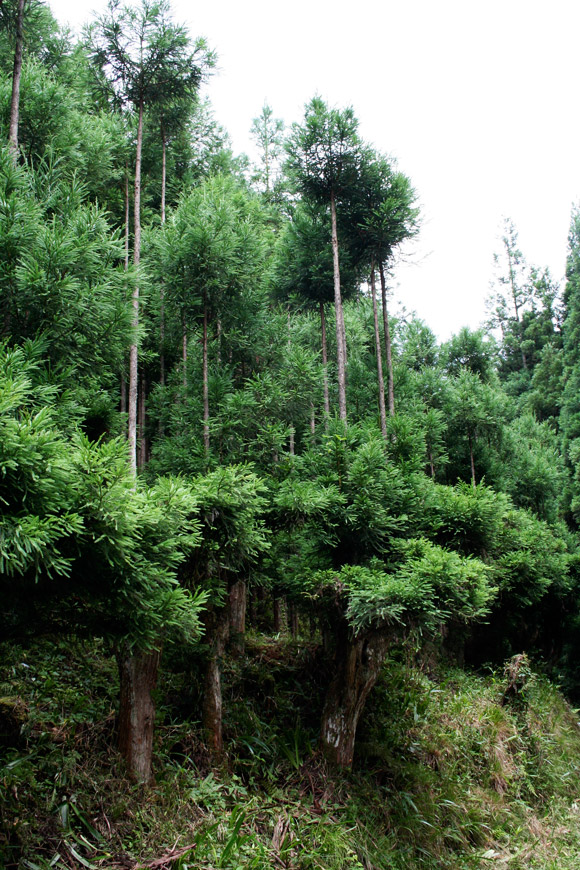Daisugi. From the name, you might have guessed that it came from Japan. Yes, daisugi is a technique of bonsai that’s usually practiced in Kitayama, the North Mountains of Kyoto. This technique is so special not only because it is an ancient technique, but also because it is so rare.
Daisugi produces special straight lumber that any other techniques cannot give. The technique was originated from 14th century when samurais still existed. In fact, the technique was discovered for the sake of those samurais.
We are not going to talk about how to make such special bonsai here, but we are going to talk about the particular technique and how it might be able to benefit us in the future. This technique might even be able to save the world from destruction.
How can this ancient bonsai technique save the world? Here in this article we are going to talk about daisugi and how it can save the world.
Of course, you can find more information on Daisugi with a help of the best essay helper who is obsessed with Japanese culture and traditions
The Cedar Forest

Before talking about daisugi, first we must talk about the original tree. Sugi means cedar in Japanese, and as we all know cedar trees produce especially long and straight lumber. However, cedar trees grown in Kitayama is different other places.
In Kitayama, the trees are cultivated in such way that it will grow very tall, straight, but stay thin. People in the area call the lumber produced by the long, tall, and thin sugi trees as ‘Kitayama Maruta’ logs. Traditionally, the logs are used for Tokonoma alcove’s main pillar.
Tokonoma alcove is a small space in Japan traditional houses specially used to display aesthetic things. The things to display may vary starting from seasonal scrolls, flower arrangements or also called ikebana, and any other art objects.
The straight and thin characteristic of Kitayama Maruta is preferred because it suits the Tokonoma alcove design. It doesn’t block the view of guests from what’s being displayed, yet it is strong enough to be the main pillar of the alcove.
Kitayama Maruta itself is the only wood to meet the specific demands of tea master Sen-no-rikyu, who is considered to have perfected the Cha-no-yu or tea drinking culture in Japan. That’s why, Kitayama cedars are highly valued in the country.
Advanced Forestry

The practice of forestry in Kitayama is uniquely sustainable. Since the cedar trees need to be harvested by cutting down the trees wholly, the foresters have prepared the replacement for those felled trees long before they harvest the old trees.
Traditionally, it needs the foresters to wait for two generations before being able to enjoy the trees that they planted. Most of the time, it is a multi-generation plant that the foresters harvest what their grandfathers planted, and plant for their grandchildren.
To make it simpler, here is the explanation: the grandfather of forester A planted cedars to be harvested by forester A’s generation. The father of forester A doesn’t do anything to the trees because he has another slot planted by his own grandfather.
Later, when they plan on harvesting their trees, both of them plant new seedlings for their grandchildren’s generation. The father plants for forester A’s children, while forester A plants for his grandchildren. Such process continues to take place since 14th century.
It shows how advanced Kitayama people’s forestry. They have prepared their grandchildren’s share of trees before even cutting down their own share. Such practice prevents deforestation in Kitayama, and keeps the nature healthy.
The Special Daisugi

As we go further into this topic, this is the part where we should talk about the more advanced forestry that Kitayama people use to keep their forests lush and serene. This technique is called daisugi, originated from the word ‘dai’ which means table.
Literally, daisugi means ‘table cedar’, because this ancient bonsai technique makes the tree looks like we are putting something on a table made from cedar tree. Indeed, the ‘table’ is the cedar tree, but the thing that’s put on it is also cedar tree. How come?
In daisugi, the cedar tree is pruned heavily in special way that it forms a giant bonsai that produce shoots of straight cedar branches growing upward. For common people, the result will appear like we are growing cedar trees on smaller cedar tree.
This technique will allow the branches to be harvested ever 20 years, shorter than normal sugi plants. What makes it incredible, one base daisugi can grow up to one hundred shoots at a time, which means we can get more Kitayama Maruta from just one daisugi.
Even though the Kitayama Maruta produced by daisugi usually smaller, but it has different characteristics compared to normal sugi trees. The lumber is 140% more flexible than normal Kitayama Maruta, while it is twice as strong and dense.
Daisugi Lumber

As mentioned above, this technique was originated from 14th century where noble samurais still exist. At that time, there were so high demand for Kitayama Maruta for the samurais’ housings. However, the number of cedar trees were limited, thus the foresters looked for a way to get more lumber without cutting down so many trees.
The answer was to get lumber from daisugi method. With stronger and denser wood, yet more flexible to be shaped, daisugi lumber was absolutely perfect choice to build the noble samurais’ houses. It resulted in aesthetic yet typhoon resistant houses to show the nobility and strength of the samurais.
In modern era, such technique can be used for much more practices in addition to get aesthetic results. We all know that there are so many things are made of woods such as chopstick, cooking utensils, ornaments, etc.
With daisugi, we can get enough lumber to produce all of those things without the needs to cut down trees. We can continually get lumber from the branches of those giant bonsais every now and then. And even though Kitayama foresters only focuses in growing cedar trees, it is possible for us to use the technique with other plants.
This ancient method has proven that it could provide enough lumber to build noble samurais houses back then. Why can’t we also use it to provide us enough woods for all our needs in the future?
Sources:



Leave a Reply